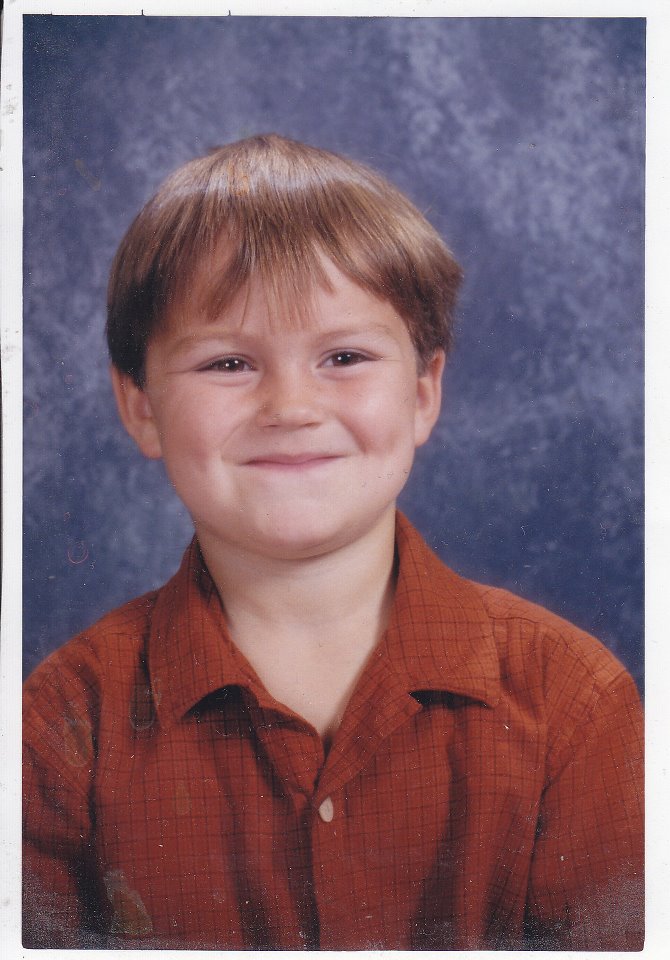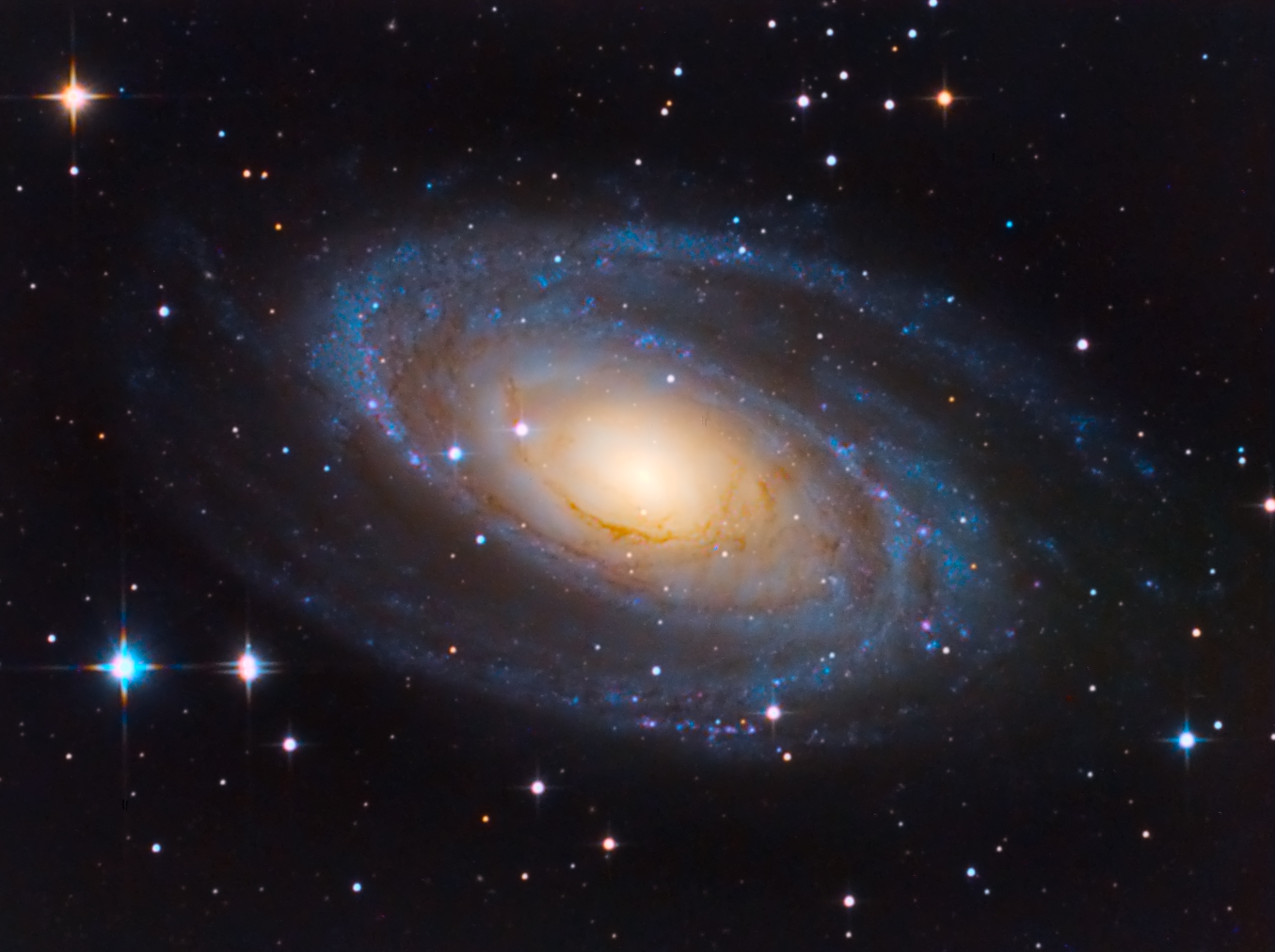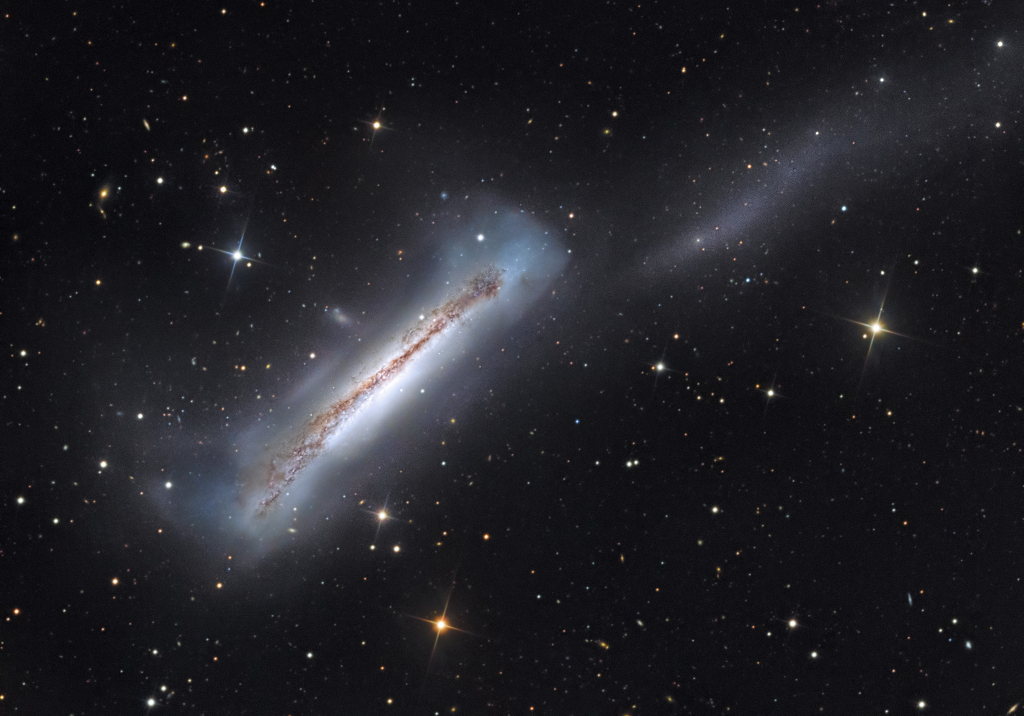Blog
Memorial Vigil for Diego Friday 6-5-20 @ 3932 Cedar Ave S. Please visit the site and leave something for Diego or visit his web site https://diego-labriola.virtual-memorials.com
On June 2nd of 2002 Diego LaBriola was struck by a vehicle in front of 3932 Cedar Ave in south Minneapolis, Minnesota; and died on June 5th. Diego was an organ donor. Diego was a radiant beam of pure Love and inexhaustible energy. His excitement for life was as contagious as his beautiful smile. One could see the unfolding Love of the Universe while gazing in his intense eyes.

Messier 81 (also known as NGC 3031 or Bode’s Galaxy) is a grand design spiral galaxy about 12 million light-years away, with a diameter of 90,000 light years, about half the size of the Milky Way, in the constellation Ursa Major. Due to its proximity to Earth, large size, and active galactic nucleus(which harbors a 70 million M☉ supermassive black hole), Messier 81 has been studied extensively by professional astronomers. The galaxy’s large size and relatively high brightness also makes it a popular target for amateur astronomers.

Peter Erskine (born June 5, 1954) is an American jazz drummer who was a member of the jazz fusion groups Weather Report and Steps Ahead. Erskine was born in Somers Point, New Jersey, US. He began playing the drums at the age of four. He graduated from the Interlochen Arts Academy in Michigan, then studied percussion at Indiana University. His professional music career started in 1972 when he joined the Stan Kenton Orchestra. After three years with Kenton, he joined Maynard Ferguson for two years. In 1978 he joined Weather Report,joining Jaco Pastorius in the rhythm section. After four years and five albums with Weather Report and the Jaco Pastorius big band Word of Mouth, he joined Steps Ahead.
more...Jerry González (June 5, 1949 – October 1, 2018 NY, NY) was an American bandleader, trumpeter and percussionist of Puerto Rican descent. Together with his brother, bassist Andy González, he played an important role in the development of Latin jazz during the late 20th century. During the 1970s, both played alongside Eddie Palmieri and in Manny Oquendo‘s Conjunto Libre, and from 1980 to 2018 they directed The Fort Apache Band. From 2000 to 2018, Jerry González resided in Madrid, where he fronted Los Piratas del Flamenco and El Comando de la Clave. In October 2018, he died of a heart attack after a fire in his home in Madrid.
In the long run of his career, González performed and recorded with musicians such as Jaco Pastorius, Tito Puente, McCoy Tyner, Dizzy Gillespie, Chet Baker, Eddie Palmieri, Cachao López, Woody Shaw, Tony Williams, Larry Young, Freddie Hubbard, Brooklyn Philharmonic, Archie Shepp, Paco de Lucía, George Benson, Chico O’Farrill, The Beach Boys, Papo Vázquez, Ray Barretto, Bobby Paunetto, Chocolate Armenteros, Hilton Ruíz, Chico Freeman, Don Moye, José “Chombo” Silva, Rashied Ali, Paquito D’Rivera, Kenny Vance, Diego El Cigala, Enrique Morente, Santi Debriano and Steve Turre.
more...
Laura Phillips Anderson (born June 5, 1947) is an American avant-garde artist, composer, musician and film director whose work spans performance art, pop music, and multimedia projects. Initially trained in violin and sculpting, Anderson pursued a variety of performance art projects in New York during the 1970s, focusing particularly on language, technology, and visual imagery. She became more widely known outside the art world when her single “O Superman” reached number two on the UK singles chart in 1981. She also starred in and directed the 1986 concert film Home of the Brave.
Anderson is a pioneer in electronic music and has invented several devices that she has used in her recordings and performance art shows. In 1977, she created a tape-bow violin that uses recorded magnetic tape on the bow instead of horsehair and a magnetic tape head in the bridge. In the late 1990s, she collaborated with Interval Research to develop an instrument she called a “talking stick”, a six-foot (1.8 m) long baton-like MIDIcontroller that can access and replicate sounds.
Anderson met singer-songwriter Lou Reed in 1992, and was married to him from 2008 until his death in 2013.
more...Pete Jolly (born Peter A. Ceragioli Jr., June 5, 1932 – November 6, 2004) was an American West Coast jazz pianist and accordionist. He was well known for his performance of television themes and various movie soundtracks.
Jolly began playing the accordion at age three, and appeared on the radio program Hobby Lobby at the age of seven. He was raised in Phoenix, Arizona, a hotbed of jazz at the time. One of his best friends and collaborators in Phoenix was guitarist Howard Roberts, whom he met at the age of 13. Following Roberts to Los Angeles in 1952, he immediately began working with the best players on the West Coast jazz scene, including Shorty Rogers. He moved easily into studio and session work. Besides his brilliance on the piano, he was a virtuoso on accordion.
His composition “Little Bird” (a minor hit on Fred Astaire‘s Ava Records) was nominated for a Grammy Award in 1963, and he formed the Pete Jolly Trio in 1964. With the Trio and as a solo artist, he recorded several albums. One of the last was a collaboration with Jan Lundgren in 2000. His final album, It’s a Dry Heat, was recorded in Phoenix in May 2004 shortly before his death. He worked with Buddy DeFranco, Art Pepper, and Red Norvo, and for many years with music arranger and director Ray Conniff and Herb Alpert, recording on Alpert’s record label, A&M as both sideman and leader.
https://www.youtube.com/watch?v=5QtnVtKrjQU&t=40s
more...The Petenera is a flamenco palo in a 12-beat metre, with strong beats distributed as follows: [12][1][2][3][4][5][6][7][8][9][10][11]. It is therefore identical with the 16th century Spanish dances zarabanda and the jácara.
The lyrics are in 4-line stanzas.
It is believed to be a very old style of song, as it was already mentioned by writer Serafín Estébanez Calderón in the mid 19th century, and the adherence to the rhythm of the old zarabanda seems to confirm its age. Several theories have been suggested as to its origin, although there is not enough evidence to sustain any of them unerringly:
- Theory of Paterna. This popular theory sustains that this palo originated in the town of Paterna de Rivera in the province of Cádiz. According to a legend, the name of the song refers to a cantadora (woman singer) called “La Petenera”, who was born there. She was reported to be, owing to her seduction power, the “damnation of men”. The name “Petenera” would be a phonetic corruption of “Paternera” (born in Paterna). This theory was sustained by folklorist Demófilo.
- Theory of the Jewish origin. According to this theory, suggested by flamencologist Hipólito Rossy, the petenera originated in the songs of Sephardi Jews. He even assured that Sephardi Jews in the Balkans still sang the lyrics that contain the verse of the Petenera as the “damnation of men”
- Some modern theories situate the origin of the Petenera in Petén, a department (administrative region) of Guatemala
more...
https://www.youtube.com/watch?v=0LRlmCko58o
more...Sharp telescopic views of NGC 3628 show a puffy galactic disk divided by dark dust lanes. Of course, this deep portrait of the magnificent, edge-on spiral galaxy puts some astronomers in mind of its popular moniker, the Hamburger Galaxy. It also reveals a small galaxy nearby, likely a satellite of NGC 3628, and a faint but extensive tidal tail. The drawn out tail stretches for about 300,000 light-years, even beyond the right edge of the wide frame. NGC 3628 shares its neighborhood in the local universe with two other large spirals M65 and M66 in a grouping otherwise known as the Leo Triplet. Gravitational interactions with its cosmic neighbors are likely responsible for creating the tidal tail, as well as the extended flare and warp of this spiral’s disk. The tantalizing island universe itself is about 100,000 light-years across and 35 million light-years away in the northern springtime constellation Leo.

Michelle Phillips (born Holly Michelle Gilliam; June 4, 1944) is an American singer, songwriter, actress, and former model. She rose to fame as a vocalist in the musical quartet the Mamas and the Papas in the mid-1960s. Phillips garnered critical acclaim for her voice, which was deemed by Timemagazine as the “purest soprano in pop music.” She later established a successful career as an actress in film and television in the 1970s. Phillips is the last surviving original member of the Mamas and the Papas.
A native of Long Beach, California, she spent her early life in Los Angeles and Mexico City, raised by her widowed father. While working as a model in San Francisco, she met and married John Phillips in 1962 and went on to co-found the vocal group the Mamas and the Papas in 1965. The band rose to fame with their popular singles “California Dreamin’” and “Creeque Alley“, both of which she co-wrote. They released five studio albums before their dissolution in 1970. With John Phillips, she gave birth to a daughter, singer Chynna Phillips.
After the breakup of the Mamas and the Papas and her divorce from John Phillips, she transitioned into acting, appearing in a supporting part in The Last Movie (1971) before being cast as Billie Frechette in the critically acclaimed crime biopic Dillinger (1973), for which she was nominated for a Golden Globe Award for Most Promising Newcomer. In 1974, she had lead roles in two television films: the crime feature The Death Squad, and the teen drama The California Kid, in the latter of which she starred opposite Martin Sheen. She went on to appear in a number of films throughout the remainder of the 1970s, including Ken Russell‘s Valentino (1977), playing Natacha Rambova, and the thriller Bloodline (1979). She released her only solo album, Victim of Romance, in 1977.
Phillips appeared in a number of films in the 1980s, first in the comedy The Man with Bogart’s Face (1980). The following year, she co-starred with Tom Skerritt in the nature-themed horror film Savage Harvest (1981), followed by the television films Secrets of a Married Man (1984) and The Covenant (1985). In 1987, she joined the cast of the series Knots Landing, portraying Anne Matheson, the mother of Paige Matheson (portrayed by Nicollette Sheridan) until the series’ 1993 conclusion.
She subsequently had supporting roles in the comedy film Let It Ride (1989) and the psychological thriller Scissors (1991). Phillips continued to appear in independent films after the millennium, with supporting parts in Jane White is Sick and Twisted (2002) and Kids in America (2005) and had recurring guest roles in the television series That’s Life (2001–2002) and 7th Heaven (2001–2004). She was an outspoken critic of the Bush administration in the mid-2000s and has also advocated the legalization of recreational cannabis.
https://www.youtube.com/watch?v=7zev_iPpqsY
more...Paquito D’Rivera (born 4 June 1948) is a Cuban-born American saxophonist, clarinetist, and composer who plays and composes jazz and classical music.
Paquito Francisco D’Rivera was born in Havana, Cuba. His father played classical saxophone, entertained his son with Duke Ellington and Benny Goodman records, and he sold musical instruments. He took D’Rivera to clubs like the Tropicana (frequented by his musician friends and customers) and to concert bands and orchestras.
At age five, D’Rivera began saxophone lessons by his father. In 1960 he attended the Havana Conservatory of Music, where he learned saxophone and clarinet and met Chucho Valdés. In 1965, he was a featured soloist with the Cuban National Symphony Orchestra. He and Valdés founded Orchestra Cubana de Musica Moderna and then in 1973 the group Irakere, which fused jazz, rock, classical, and Cuban music.
By 1980, D’Rivera had become dissatisfied with the constraints placed on his music in Cuba for many years. In an interview with ReasonTV, D’Rivera recalled that the Cuban communist government described jazz and rock and roll as “imperialist” music that was officially discouraged in the 1960s/70s, and that a meeting with Che Guevara sparked his desire to leave Cuba. In early 1981, while on tour in Spain, he sought asylum with the American Embassy, leaving his wife and child behind, with a promise to bring them out of Cuba.
more...Anthony Braxton (born June 4, 1945) is an American composer and multi-instrumentalist who is known in the genre of free jazz. Since the 1960s, he has released more than 100 albums. He plays many types of saxophone (soprano, alto, tenor, baritone, bass, contrabass, sopranino, C-melody, mezzo-soprano) and clarinet (E-flat, B-flat, contrabass), in addition to flute, alto flute, and piano. Braxton studied philosophy at Roosevelt University. He taught at Mills College in the 1980s, and was Professor of Music at Wesleyan University from the 1990s until his retirement at the end of 2013. He taught music composition and music history, with a concentration on the avant-garde, as well as leading ensembles in performances of his compositions. In 1994, he was given a genius grant by the MacArthur Foundation. In 2013, he was named a 2014 National Endowment for the Arts Jazz Master.
Braxton was born in Chicago, Illinois, United States. Early in his career, Braxton led a trio with violinist Leroy Jenkins and trumpeter Wadada Leo Smith and was involved with the Association for the Advancement of Creative Musicians founded in Chicago.
In 1969, Braxton recorded the double LP For Alto. There had previously been occasional unaccompanied saxophone recordings (notably Coleman Hawkins‘ “Picasso”), but For Alto was the first full-length album for unaccompanied saxophone. The album’s tracks were dedicated to Cecil Taylor and John Cage, among others. The album influenced other artists like Steve Lacy (soprano sax) and George Lewis (trombone), who went on to record their own solo albums.
more...
Oliver Edward Nelson (June 4, 1932 – October 28, 1975) was an American jazz saxophonist, clarinetist, arranger, composer, and bandleader. He is perhaps best remembered for his 1961 Impulse! album The Blues and the Abstract Truth (1960), often regarded as being among the most significant recordings of its era. The centerpiece of the album is the definitive version of Nelson’s composition, “Stolen Moments“. Other important recordings from the early 1960s are More Blues and the Abstract Truth and Sound Pieces, both also on Impulse!.
Oliver Nelson was born into a musical family in St. Louis, Missouri, United States. His brother was a saxophonist who played with Cootie Williams in the 1940s, and his sister sang and played piano. Nelson began learning to play the piano when he was six and started on the saxophone at eleven. Beginning in 1947 he played in “territory” bands in and around Saint Louis before joining the Louis Jordan band where he stayed from 1950 to 1951, playing alto saxophone and arranging.
In 1952, Nelson underwent military service in the Marines playing woodwinds in the 3rd Division band in Japan and Korea. It was in Japan that Nelson attended a concert by the Tokyo Philharmonic Orchestra and heard Maurice Ravel‘s Mother Goose Suite and Paul Hindemith‘s Symphony in E Flat. Nelson later recalled that this “‘was the first time that I had heard really modern music for back in St. Louis I hadn’t even known that Negroes were allowed to go to concerts. I realized everything didn’t have to sound like Beethoven or Brahms … . It was then that I decided to become a composer'”..
https://www.youtube.com/watch?v=Dknd_H_e-rY
more...https://www.youtube.com/watch?v=8USz7gb2RGQ
more...The massive star cluster Westerlund 2, seen here in a new image from the Hubble Space Telescope, is filled with young stars surrounded by dense clouds of interstellar dust that’s in the process of forming baby planets. But the stars in the center of the cluster don’t have the same planet-building supplies as their neighbors near the cluster’s outskirts, Hubble observations have revealed. The absence of dust in the center of Westerlund 2 is caused by “blistering ultraviolet radiation and hurricane-like stellar winds” coming from the biggest and brightest stars of the cluster, which congregate in the cluster’s core, eroding and blasting away all the dust, Hubble officials said in a statement.

Curtis Lee Mayfield (June 3, 1942 – December 26, 1999) was an American singer-songwriter, guitarist, and record producer, and one of the most influential musicians behind soul and politically conscious African-American music. He first achieved success and recognition with The Impressions during the civil rights movement of the late 1950s and 1960s, and later worked as a solo artist.
Born in Chicago, Illinois, Mayfield started his musical career in a gospel choir. Moving to the North Side, he met Jerry Butler in 1956 at the age of 14, and joined the vocal group The Impressions. As a songwriter, Mayfield became noted as one of the first musicians to bring more prevalent themes of social awareness into soul music. In 1965, he wrote “People Get Ready” for the Impressions, which displayed his more politically charged songwriting. Ranked at no. 24 on Rolling Stone‘s list of the 500 Greatest Songs of All Time, the song received numerous other awards, and was included in the Rock and Roll Hall of Fame 500 Songs that Shaped Rock and Roll, as well as being inducted into the Grammy Hall of Fame in 1998.
After leaving the Impressions in 1970 in the pursuit of a solo career, Mayfield released several albums, including the soundtrack for the blaxploitationfilm Super Fly in 1972. The soundtrack was noted for its socially conscious themes, mostly addressing problems surrounding inner city minorities such as crime, poverty and drug abuse. The album was ranked at no. 72 on Rolling Stone’s list of 500 Greatest Albums of All Time.
Mayfield was paralyzed from the neck down after lighting equipment fell on him during a live performance at Wingate Field in Flatbush, Brooklyn, New York, on August 13, 1990. Despite this, he continued his career as a recording artist, releasing his final album New World Order in 1996. Mayfield won a Grammy Legend Award in 1994 and a Grammy Lifetime Achievement Award in 1995. He is a double inductee into the Rock and Roll Hall of Fame, as a member of the Impressions in 1991, and again in 1999 as a solo artist. He was also a two-time Grammy Hall of Fame inductee. He died from complications of type 2 diabetes at the age of 57 on December 26, 1999.
more...More Posts
- The Cosmos with Mz3
- Hamid Drake Day
- Roscoe Mitchell Day
- Eddie Jefferson Day
- World Music with Musafily Jobarteh
- Daily Roots with Gadfrey Lewis
- The Cosmos with IC 1570
- Jim Capaldi Day
- Nana Vasconcelos Day
- Big Nick Nicholas Day
- World Music with Cameron y Tomatito
- Daily Roots with the Meditations
- The Cosmos with G292.0+1.8
- Robert Cray Day
- Paddy Maloney Day
- Ramblin’ Jack Elliott Day
- Elmer Crumbley Day
- World Music with Faith (CheMuphuwa) Mussa
- Daily Roots with Inka Inka
- The Cosmos with IC1795